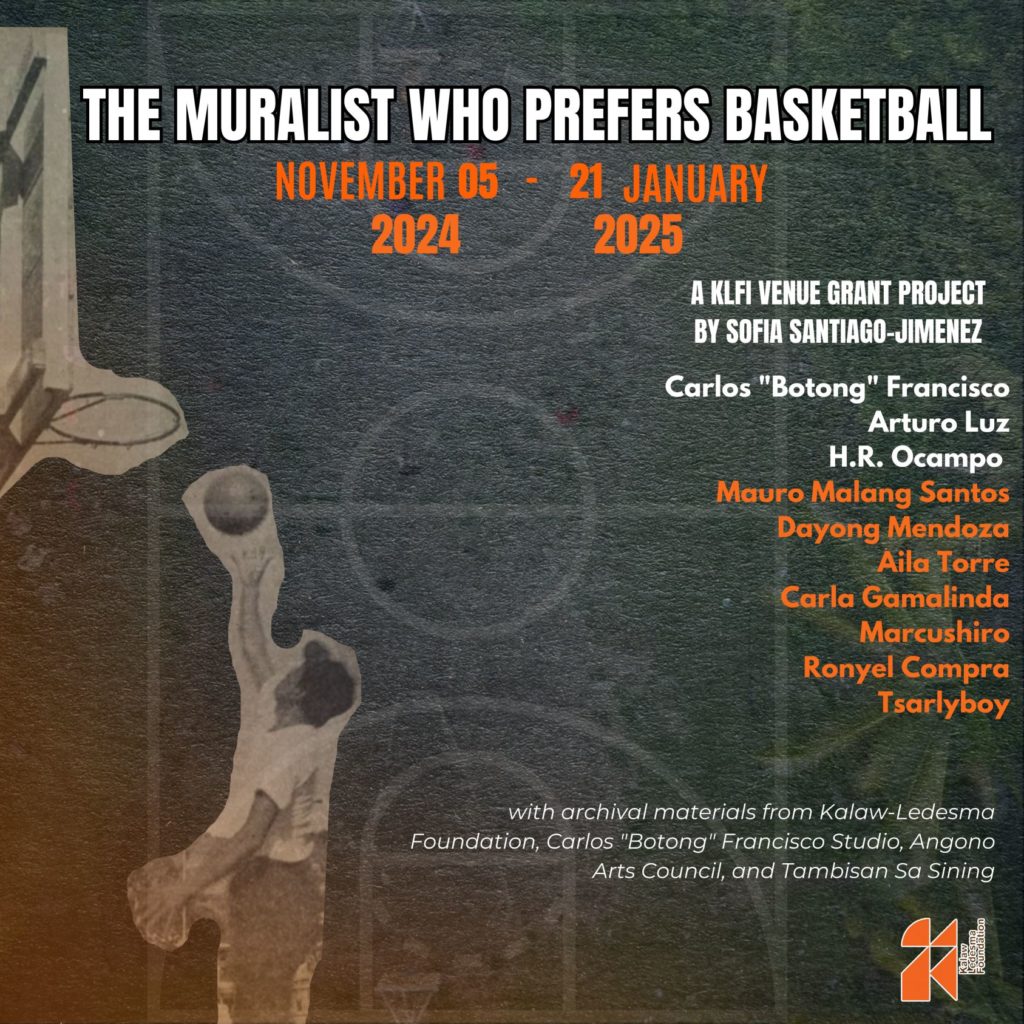
The Muralist Who Prefers Basketball
A project by Sofia Santiago-Jimenez, supported by KLFI Venue Grant
Nov 5, 2024 – Jan 21, 2025
Purita Kalaw-Ledesma Center, Makati City
The “paint” defines the area on the basketball court known as the key—a critical zone where games are often decided. Its strategic significance is multi-layered, influencing scoring chances, defensive blocks, and the overall rhythm of play. In artistic terms, “paint” broadly refers to the application of color or the creation of imagery.
In Angono, the beloved tools of Carlos “Botong” Francisco, were paint, canvas, and walls. Yet, he would often set aside these materials in favor of the hoop and the ball. Drawing inspiration from the title and concept of a 1962 article written by A. Tidaya and archived in through the scrapbooks of Purita Kalaw-Ledesma, “The Muralist Who Prefers Basketball” delves into the intentional and incidental connections between Philippine art and basketball culture. The dynamic interplay between basketball and art transcends mere aesthetic appreciation, revealing profound cultural narratives and shared expressions of identity, competitions, and community. Both realms celebrate movement, rhythm, and improvisation, each medium echoing the flexible nature of both fields and the whole idea of the game.
Artists such as Tsarlyboy have captured this synergy, through his installations and collage works that serve as case studies to the themes and issues surrounding the sport and society. Artist and professional basketball coach Dayong Mendoza, through his large-scale works on canvas, has chronicled the Filipino psyche through the lens of the sport on and off the court. Aila Torre and Carla Gamalinda, weave together words and illustrations that highlight women’s groundbreaking contributions in both art and basketball, showcasing the diverse yet strategic ways women are redefining the boundaries of the game. Marcushiro, brings humor and a sense of play to his illustrations, illustrating the influence of basketball on art and pop culture. Lastly, Ronyel Compra highlights provincial courts by documenting the everyday yet significant uses of basketball materials, emphasizing the role of the sport within the community.
Further informing this synthesis are works by H.R Ocampo, who, interestingly, played for Letran’s basketball team before pursuing art school overseas. Additionally, Arturo Luz’s “Brown Man” likely symbolizes key figures in the sport, while individual and collaborative works by Mauro Malang Santos and Carlos “Botong” Francisco depict the experiences of Filipinos living beyond the urban.
By showcasing these art pieces and archival materials from the Kalaw-Ledesma Foundation collection, the Angono Cultural Heritage Office, and Tambisan sa Sining, the exhibition weaves a narrative that extends to address societal issues. It aims to uncover connections that encourage critical reflections on the nature of winning opportunities, inclusion, community, value, and identity.
———
The exhibit is free and open to the public. To visit, please register first through this link: https://bit.ly/klfi-muralist-reg
For questions, please email contact@klfi.ph.




